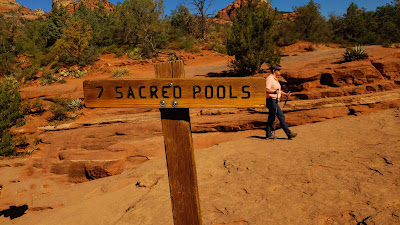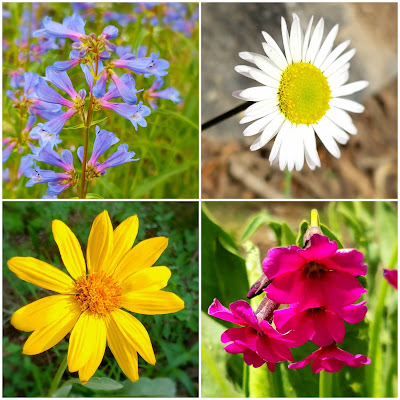Sacred sites
Earlier this week in Sedona, Bonnie and I visited the "Seven Sacred Pools" shown in the photos - a series of water-carved depressions in the sandstone, lined up close to each other, that were considered as a sacred site by the Yavapai and Apache Indians who had deep insight into nature's gifts, and especially the importance of water. Unfortunately the seasonal stream that makes the depressions into pools was already dried up, except for some standing water in the lower pools. It was still a beautiful setting.
The interesting thing about a sacred site - natural feature, building, even an entire city - is that while it is considered sacred to one group of people, it's generally "just another place" to everyone else. We attribute "sacredness" to the site because of our personal interpretation and associations - perhaps events of significance that occurred on the site, or people we revere who were born there, or the things that we feel the place represents. The associations can be spiritual, religious, cultural, historical, or emotional. But others who don't share the associations will not find anything unusual about the place.
I always enjoy visiting "sacred sites" in various places and settings - churches, geographical features, battlefields, cemeteries, buildings. If a place is special and meaningful to someone, I can learn something about their beliefs and insights by treating the site with respect and reverence. I have often felt a sense of peace and inspiration in such places even though I didn't share the particular beliefs of the group. But in every case, I think there is much to learn from the beliefs and feelings of one another.
I #GiveThanks for my own sacred places that are meaningful to me; but also for those belonging to others that I can respect and appreciate.







Comments
Post a Comment